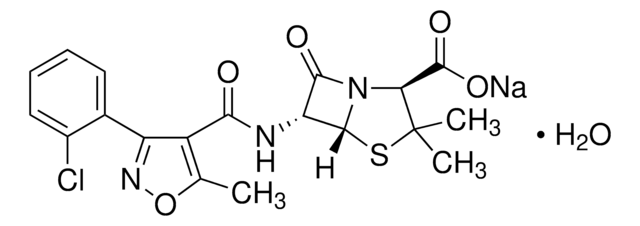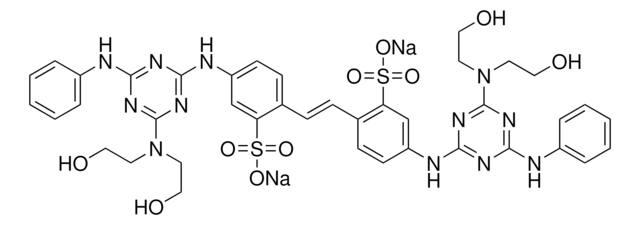D219
Monoclonal Anti-Dihydropyridine Receptor (α2 Subunit) antibody produced in mouse
clone 20A, ascites fluid, buffered aqueous solution
Sinónimos:
Anti-CACNA2, Anti-CACNL2A, Anti-CCHL2A, Anti-LINC01112, Anti-lncRNA-N3
About This Item
Productos recomendados
origen biológico
mouse
Nivel de calidad
conjugado
unconjugated
forma del anticuerpo
ascites fluid
tipo de anticuerpo
primary antibodies
clon
20A, monoclonal
Formulario
buffered aqueous solution
mol peso
antigen 143 kDa (reduced)
antigen 220 kDa (non-reduced)
reactividad de especies
rat, mouse, rabbit, guinea pig
técnicas
immunohistochemistry (frozen sections): 1:500
western blot: 1:500
isotipo
IgG2a
Nº de acceso UniProt
Condiciones de envío
dry ice
temp. de almacenamiento
−20°C
modificación del objetivo postraduccional
unmodified
Información sobre el gen
mouse ... Cacna2d1(12293)
rat ... Cacna2d1(25399)
Categorías relacionadas
Descripción general
Especificidad
Inmunógeno
Aplicación
Western Blotting (1 paper)
- immunofluorescent histochemistry
- surface plasmon resonance binding
- immunohistochemistry (IHC)
- immunoblotting
Acciones bioquímicas o fisiológicas
Forma física
Otras notas
Cláusula de descargo de responsabilidad
¿No encuentra el producto adecuado?
Pruebe nuestro Herramienta de selección de productos.
Código de clase de almacenamiento
10 - Combustible liquids
Clase de riesgo para el agua (WGK)
nwg
Punto de inflamabilidad (°F)
Not applicable
Punto de inflamabilidad (°C)
Not applicable
Equipo de protección personal
Eyeshields, Gloves, multi-purpose combination respirator cartridge (US)
Elija entre una de las versiones más recientes:
¿Ya tiene este producto?
Encuentre la documentación para los productos que ha comprado recientemente en la Biblioteca de documentos.
Nuestro equipo de científicos tiene experiencia en todas las áreas de investigación: Ciencias de la vida, Ciencia de los materiales, Síntesis química, Cromatografía, Analítica y muchas otras.
Póngase en contacto con el Servicio técnico







